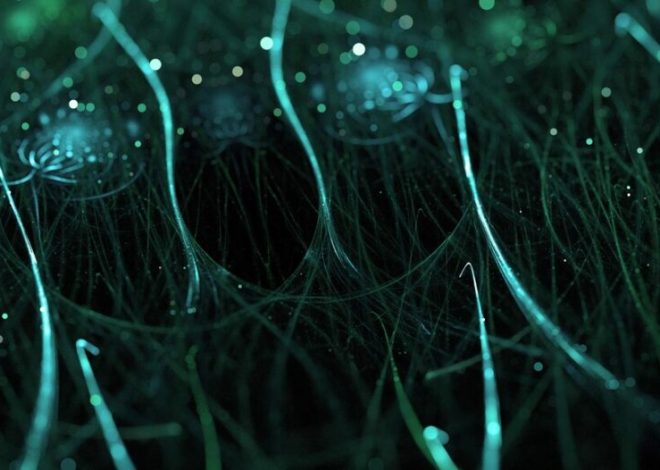
Foo Fighters – Medicine At Midnight
Their fans have had to wait a long time, but in a few days the time has finally come: On Friday the Foo Fighters are releasing their tenth studio album, “Medicine At Midnight”. The record, released by RCA, contains nine tracks that couldn’t be more different. Find out what the songs are capable of and what it all has to do with a haunted house in our review.
But let’s get to the facts first. With Greg Kurstin as producer, the band around guitarist and singer Dave Grohl shows that they trust in the work of the previous album “Concrete and Gold”. Kurstin was already a producer there. “Medicine At Midnight”, which was originally supposed to be released in 2020 but was postponed due to the COVID pandemic, was supposed to break new ground despite well-known actors. One indication of this is the first use of a drum loop, which had not been used in the Foo Fighters’ music up to that point.
The Foo Fighters introduce elaborately
The first song on the album, “Making A Fire,” creates a positive tone in the listener, which is further enhanced by the use of the choir. The band of the former Nirvana drummer proves from the very first notes that the music has strived for brilliance over the years and was written for the world’s major stages.
The complexity of the song, wrapped up in a stadium rock style – that fits. The constant ups and downs, caused by a rather hard verse, which is softened by the rather soft bridges and choruses and rises in contrast, shows the existing versatility. The energetic mood of the piece also radiates power on the one hand, but is not too exaggerated on the other, which allows for a solid introduction to “Medicine At Midnight”.
“Shame Shame”, the second song on the record, has already been released in advance. Two things are striking. Firstly, there is the drastic difference in the drums compared to the previous song. The second track has a strong reverb on the snare and the supporting claps. It is almost as if the drums were recorded in a cold, empty room.
On the other hand, it is the musical diversity of the song. While the vocals take a back seat and are seen as part of the overall work, the song varies from choppy sounds in the verses to a gliding and swinging sound in the bridge. The strings in particular reinforce this impression and make the overall rather reduced song sound, within the realm of possibility, diverse.
“Cloudspotter” proves that a band with such a long history as the Foo Fighters has a number of styles in its repertoire. While the first two pieces were already different and the band’s signature was still clearly recognizable, the third track is what you would call a classic Foo Fighters song.
The sharp sound of the instruments, which is created by a compressor, immediately catches the ear. The vocals have also been doubled and a female voice has been added. Overall, the song is very danceable, and the double-time drums also create a driving note, which is taken to the extreme by effects such as the riser in the C section of the piece. Last but not least, it is Grohl’s high screams that manifest his vocal range and give the song the final Foo Fighters touch.
A constant up and down
“Waiting on a War” is the perfect counterpoint to the previous song. The acoustic song, which begins rather reservedly and dreamily, builds up as it goes on. At this point the piece gets steadily faster and ends in a driving rock song. Was that necessary? Most likely not. The calm until the end of the piece would most likely have allowed the listener to take a breather. Live, however, this change within the song will work perfectly and be a lot of fun. It is quite possible that opinions will differ here.
The title track halfway through the album is another highlight. “Medicine At Midnight” is definitely one thing: funky. The whole song has an 80s vibe, and there are also extremely deep vocals that you would hardly associate with Dave Grohl. The basic tone of the song stands out from the rest. There is a certain drama, which is particularly evident in the chorus. The second verse is also sung a little higher and therefore has more of the usual Foo Fighters sound.
“No Son Of Mine” is driven by the guitars. They gallop forward right from the start and whip the piece forward. Even if the riff can seem monotonous over time, the other instruments offer a lot of variety. This is clear, for example, in the different drum parts played by drummer Taylor Hawkins. The drums in particular provide the link between the different parts in this piece and ensure smooth transitions that make the song seem well-rounded and authentic.
Didn’t we just talk about the big rock productions? “Holding Poison” is just such a song. The kicking bass drum invites you to clap along rhythmically in stadiums all over the world, the chorus is 100% Foo Fighters and the guitar solo adds another color to the overall picture. In addition, the song is “I’m spinning around” arranged in such a way that the instruments almost swirl around the listener’s ears, creating a connection between music and lyrics.
Was that too hard? The Foo Fighters shift down a gear once again
“Chasing Birds” brings a somewhat dreamier mood to the album. It also does exactly what could be criticized about “Waiting on a War”: it consistently follows through with the quiet, melancholic theme. The Foo Fighters dress themselves in an almost singer/songwriter guise with quiet sounds and filters on the vocals. It’s almost as if the track has a sepia filter. And even this excursion into related yet unfamiliar territory suits the band.
The end of “Medicine At Midnight” is marked by “Love Dies Young”. The galloping theme is taken up again, while the beat alternates between straight and offbeat varied. Overall, the musical carpet is rather reduced, which somewhat reduces the multitude of different influences. The song benefits from this. As far as the progression goes, the piece becomes more predictable over time. However, the positive vibes still reach the listener and form a framework around the record. In addition, the piece is definitely suitable for being properly staged live.
With paranormal influences to a well-rounded album
And what’s the deal with the haunted house? Dave Grohl revealed in an interview that the album was recorded in a house where paranormal things happened. All the mixer controls were turned down overnight, the guitars went out of tune and recordings were deleted overnight and new ones were added. Despite or perhaps because of these not-so-normal external circumstances, “Medicine At Midnight” is definitely worth recommending.
Photo: Brantley Gutierrez / Official press photo from RCA Records

Ethel Purdy – Medical Blogger & Pharmacist
Bridging the world of wellness and science, Ethel Purdy is a professional voice in healthcare with a passion for sharing knowledge. At 36, she stands at the confluence of medical expertise and the written word, holding a pharmacy degree acquired under the rigorous education systems of Germany and Estonia.
Her pursuit of medicine was fueled by a desire to understand the intricacies of human health and to contribute to the community’s understanding of it. Transitioning seamlessly into the realm of blogging, Ethel has found a platform to demystify complex medical concepts for the everyday reader.
Ethel’s commitment to the world of medicine extends beyond her professional life into a personal commitment to health and wellness. Her hobbies reflect this dedication, often involving research on the latest medical advances, participating in wellness communities, and exploring the vast and varied dimensions of health.
Join Ethel as she distills her pharmaceutical knowledge into accessible wisdom, fostering an environment where science meets lifestyle and everyone is invited to learn. Whether you’re looking for insights into the latest health trends or trustworthy medical advice, Ethel’s blog is your gateway to the nexus of healthcare and daily living.




